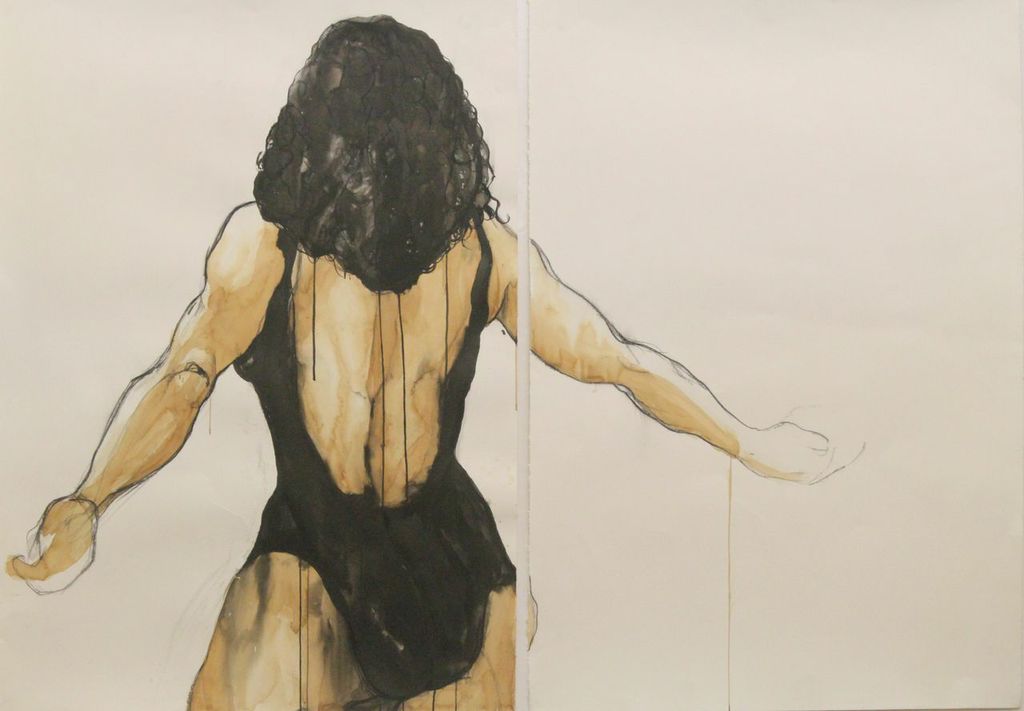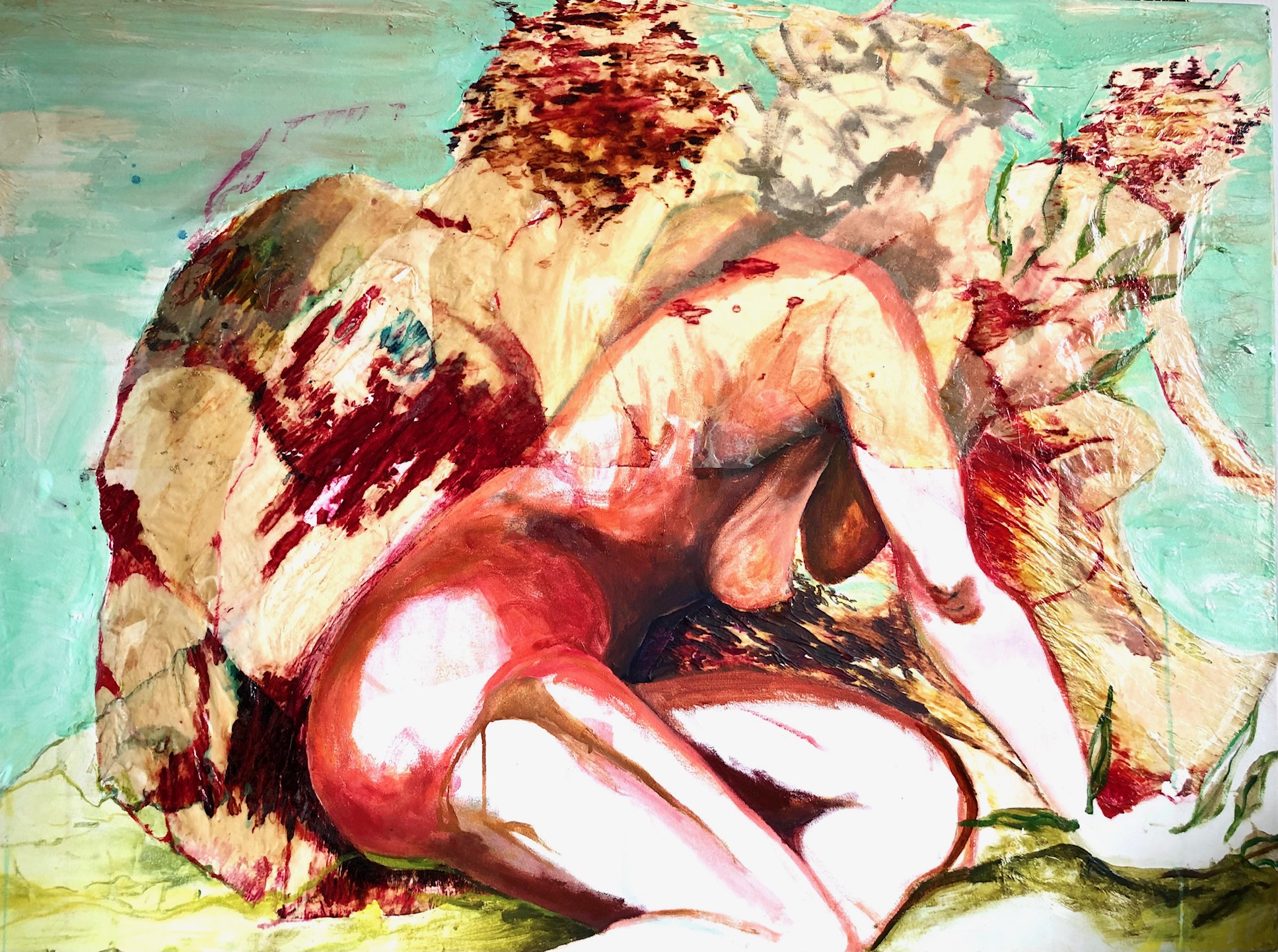We caught up with the brilliant and insightful Paula Walters Parker a few weeks ago and have shared our conversation below.
Paula, looking forward to hearing all of your stories today. What’s been the most meaningful project you’ve worked on?
The most meaningful project I have worked on today is my Wailing Women project. What makes it meaningful to me is that it was the genesis of exploring a more generative theme that I was not expecting when I first began working on it. From that one drawing I have explored historic and contemporary social political issues, themes of culture and identity, loss and grief, and survival.
Whaling Women is a piece I created that was inspired by Rodin’s Burghers of Cali. In the large scale drawing I used coffee stains to describe the details of tensions within the body as it is put under duress and the muscles unknowingly, but naturally, contracts and flex. I didn’t expect to be seduced by the beauty that can exist in suffering but looking back it makes sense that I represent that kind of suffering in the body of a Black woman. Black women, in my experience, know how to triumph over suffering with grace. I watched my mother and grandmother do exactly that when I was growing up. I also watched them struggle to be kind and gentle to themselves and their children as we grew into young adults in a place that criminalized us. The draw is my representation of a gesture that seemed familiar to me. Something I see when Black women mourn the loss of a child. In the drawing I used coffee to represent the skin tone, the coffee itself is a symbol of all things African, because the oldest documented coffee culture is in Africa and coffee trade today often capitalize on African crops without giving credit.
From this drawing I was inspired to create a whole series of other drawings, paintings and sculptures exploring similar or tangential themes and that is why it is a significant project in my body of work.

Paula, love having you share your insights with us. Before we ask you more questions, maybe you can take a moment to introduce yourself to our readers who might have missed our earlier conversations?
I am an artist who loves to experiment with materials and see where they lead. From everyday foraged pigments and natural textures to bold colors and layered strokes, I let art unfold as a playful dialogue, exploring how each element interacts and surprises. Drawing on family stories, music, history and daily experiences, my work is a celebration of resilience, curiosity, and connection.
Through a process of “active imagination,” I let materials take the lead, embracing spontaneity and accidents that bring unexpected beauty. I develop a practice of creating a scenario whereby I relinquish control to the materials, allowing myself to be attuned to the accidents and opportunity to change in those moments. I hope to invite viewers to pause, look closer, reflect, and enjoy the richness of what they might discover.
I studied art at Central St. Martins in London, Parsons School of Design, and acquired a Masters in Creative Art Therapy at Pratt Institute in New York City. When I am not in the studio, I share my passion for creativity with public high school students in Manhattan. I am originally from Kingston, Jamaica, and now I am based in Brooklyn, New York.

Is there something you think non-creatives will struggle to understand about your journey as a creative? Maybe you can provide some insight – you never know who might benefit from the enlightenment.
As a visual artist and a person who endeavors to live a creative life the thing that most people misunderstand about my journey is the value of time. Time for an artist is a valuable commodity. Artists need time to process, create and make decisions about how to move forward or restart a project.
As a young artist I also did not appreciate the value of my time and did not invest in creating a sacred space for my practice. I also did not always consider time in the way that I priced my work. Many people want to pay minimal price for masterpieces but do not understand that artists spend days, sometimes months and years on works that they think are easy. I once listened to an interview of writer, photographer Tegu Cole where he talked about people who would look at his work and ask him about the technicalities of the camera or the development process of his photographs, as if they could create the same artwork if they too had access to his camera. I share his sentiments and feel like people underestimate the time, skill, innate understanding of self and discipline that goes into the creative process. Many people simply do not understand the value of the artist’s time and that’s oftentimes why they want to buy cheap art.
![]()
What do you think is the goal or mission that drives your creative journey?
The main drive for me in my creative journey today is the achievement of unity and one love. Art has helped me to identify and connect with a place of self love, love for my family and love for humankind. By interrogating cultural ideas and ideology through the art making process I am able to come to a place of understanding that has led to love and respect for others.
I often work with the tension of dialectical and opposing energy in my work. Bushing boundaries of connection of liquid to solids, black ink to white paper, humans to earth in order to get to a deeper understanding of the conditions that drive us as humans.
I hope to break down barriers and through a process of questioning and self inquiry.
Contact Info:
- Website: https://www.paulawparts.com
- Instagram: https://www.instagram.com/paulawaltersparker/?utm_medium=copy_link
- Youtube: https://www.youtube.com/@PaulaWaltersParker

Image Credits
Paula Walters Parker


